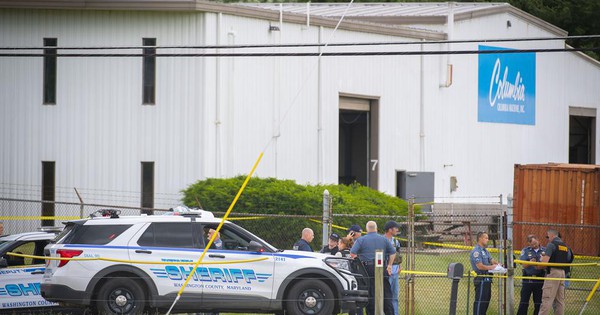How Margin Contributed to the Wall Street Crash of 1929
In the 1920s, both American businesses, individuals and banks borrowed to buy stocks when they only had to spend 10-20% of their own money.
On October 16, 1929, the famous economist Irving Fisher wrote on New York Times that “stock price looks to have hit a steady high”. However, just eight days later, on October 24, 1929, the US stock market began a four-day losing streak, with Black Thursday and Black Tuesday.
This cost investors more than World War I and was one of the causes of the Great Depression that followed 1929-1933. The statement by Irving Fisher thus also became one of the worst stock forecasts of all time.
Risks and early warning signs
In the period 1920 – 1929, US GDP grew by 42%, from 688 billion USD to 977 billion USD. The average income of people also increased by 1,500 USD and the unemployment rate was kept below 4%. Optimism and prosperity were at an all-time high. Newspapers constantly publish stories about teachers, drivers, and maids making millions of dollars on the stock market.
Everyone wanted to participate in the market and credit was also abundant at that time. Both businesses and individuals borrow to buy shares (margin). Using margin means that investors only need 10-20% of their own money and borrow the rest from the brokerage firm. This type of leverage is extremely risky, because if the stock price falls below the borrowed amount, the securities company will call on margin, demanding immediate repayment of the loan.
However, despite this risk, even banks use margin to buy stocks. Some even used customer deposits, as there was no law at the time to prohibit this. The DJIA was continuously going up during the period 1920 – September 1929.

The DJIA continuously went up from 1920 – 1929. Graph: Value Walk
On March 25, 2929, the market corrected, down 10% from the 52-week peak. The margin call announcement was made and investors started panicking. Even so, a group of banks reassured them that banks would continue to lend. The market then gradually recovered.
Many other warning factors also appear, but are all ignored. Steel output, car sales and home construction activity all slowed. Some banks stopped operating. However, many economists agree with Irving Fisher’s optimism about the market’s prospects. Only a few sounded the alarm.
When the stock market hit new highs that summer, investors ignored the negative forecasts altogether. On September 3, 1929, the DJIA increased by 27% over the same period of the previous year.
Black Thursday and Black Tuesday
A few weeks later, stock prices began to decline. By October 23, 1929, the DJIA had lost almost 20% from its peak. During the last hour of that session, stocks suddenly plunged. The market closed in fear and ambiguity. The next day – October 24, 1929 – went down in history as Black Thursday.
Upon opening, 150,000 shares of oil company Cities Service sold for $8.4 million. By mid-morning, blue-chip stocks were down as much as $10 per sale. By noon, names like RCA Corporation or Montgomery Ward lost 30% and 40% respectively.
To counter the growing panic, Richard Whitney – head of the New York Stock Exchange and head of JP Morgan’s brokerage business, bid a higher 25,000 shares of US Steel. This strategy has worked. The market recovered again.
Montgomery-Ward opened at $83, bottomed out at $50 and closed at $74 a share. Even so, the DJIA closed down 11%, with nearly 13 million shares changing hands – 3 times higher than usual.
The next session, the market seemed calmer. Trading volume dropped to 6 million. Investors spend a few weekends re-evaluating their portfolios. When the market reopened the following Monday, stock prices plunged again and trading volumes continued to soar. This time, there was no last-minute rally.
October 29, 1929 (Black Tuesday), investors panic really. 3 million shares changed hands in the first 30 minutes of the session. When investors try to contact brokers, the phone lines are constantly congested.
Stockbrokers continue to margin call and sell stocks to investors who cannot immediately repay 80-90% of loans, causing many people’s lifetime savings to evaporate in an instant. At the close, the DJIA fell 12%, with 16.4 million shares sold.

DJIA plummeted after the events of 1929. Graph: Value Walk
The cause of the US stock market crash in 1929
– Use margin
Before the market crash, about 40% of loans in the US were used to buy stocks. When the market plunges, brokers start calling on margin and buyers often can’t pay. When this happens, brokers continue to sell investors’ shares, causing their savings to evaporate and the panic to increase.
– Lack of legal regulations
Current policies on bank savings and stock trading did not exist in 1929. Banks used customer deposits to buy stocks without informing them. Besides, investors cannot get their money back when the brokerage company goes bankrupt.
– Stocks are overvalued
Many consider this to be the main cause of the crash of 1929. However, there is not much evidence to support this. Stocks increased in price by 120% between 1925 and 1929. On average 22% per year. This is a large increase, but is consistent with the strong economic development of the US at that time.
The stock price-to-earnings (P/E) ratio is also not too high. In 1929, the average P/E was 15. In January 2018, the P/E of stocks in the S&P 500 index was close to 23.
– Trouble from London
On September 20, 1929, the London Stock Exchange (LSE) suspended shares of Hatry Group after founder Clarence Hatry was found to have purchased United Steel Companies with fake collateral. Hatry Group collapsed, causing investors to lose billions of dollars, dragging the LSE down. This news also made US investors worried.
– Fed policy
Economists and historians have long argued that Federal Reserve policy contributed to the crash of 1929. In 1928 and 1929, the Fed raised interest rates to curb stock speculation. stock. However, rising interest rates slow down economic activity in the US and have ripple effects globally. In 2002, Ben Bernanke (then a member of the Fed’s Board of Governors) acknowledged that the Fed played a role in this, saying that the Fed’s mistakes contributed to “creating the worst economic disaster in American history”.
Analysts said that it was difficult for investors to avoid the events of 1929. Even the famous economist John Maynard Keynes could not predict this.
Besides, the market at that time was very unpredictable. The rally before the plunge occurred many times stronger, making it impossible to predict when the decline would end. Some investors correctly read the warning signals and sold stocks before Black Thursday. Then they bought it back at a bargain price and lost even more on Black Tuesday the following week.
Ha Thu
at Blogtuan.info – Source: vnexpress.net – Read the original article here



